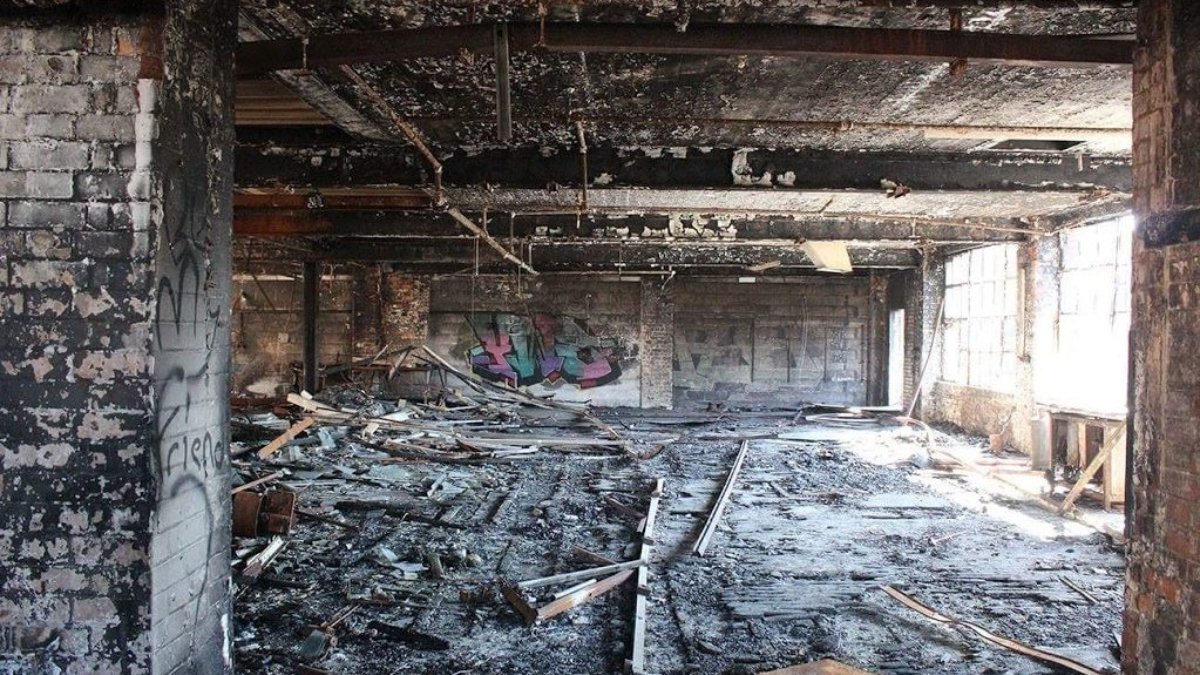
By Alice Hutchins
I am in an old fashioned telephone box. In front of me a raven hunches over a carcass which is obscured from my view, picking violently at the meat. I glance around, there are more ravens just outside the glass. In the distance I hear the crowing sound. Others are coming. I feel uneasy as the sky above deepens from a pale morning grey to bloody amber. I focus back on the raven in front of me, and as it pulls at its meal, the carcass falls into view. I look away. The raven turns to look at me, its head twisting in an unnatural way, the coal-black feathers on its powerful wings seem to suck all light from the air, and even the glow of the phone box dims in comparison. Over-head, a frenzy of wings dart through the air and I flinch as I hear a sudden thud, a raven has landed on the glass to my left, and another on the part above my head. As I look up at it, it begins to drag its sharp talons along the glass, making the screeching sound of nails on chalk board, or tearing metal. A sudden thump makes me jump, my whole body pulling away from the raven who is now pecking the glass on my left. A small chip appears, and the razor beak begins furiously snapping at the jagged edges, protruding into the box with me. Another sharp thump hits and suddenly ravens are throwing themselves at the box, it sounds like glass shattering and bones breaking at the same time, the effect is so real I feel a strong urge to cover my head and scream… As the simulation comes to an end, I remove the VR headset and laugh nervously, shaking off the uneasy feeling from moments before.
Virtual Reality (VR) is a technology that plays on all of our senses, our natural instincts and our fears. It is a device that tunes in to the human psychology and stimulates the mind to feel as though what is happening in front of our eyes is a real experience. As part of my research for the DERN organisation, I underwent a reality experience called ‘Fowl Play’ in order to understand how realistic and stimulating the process can be, and how it might be able to have real world applications. The technology used in VR simulations is not only used for leisure, as the Leicestershire Fire and Rescue Department demonstrate, it is now being used to train and educate fire-fighters in how to tackle difficult and hazardous fires. There are already videos used in preparation to fight-fires, but VR takes this concept to a new level, it is incredibly immersive, and presents a more involved approach to the educating system for emergency response teams.
‘Our main goal is for RiVR to revolutionise training for the emergency services, allowing them to train in real life locations within virtual reality but safer and cheaper than traditional training techniques’ – RiVR
By using a range of images and videos from real fire scenes, combined with visual effects and computer recreations, the technology allows the team to adjust the skills they learn from the RiVR in to genuine scenarios. For example, when I was in the Raven Simulation, the first reaction I had once I realised I was trapped in the telephone box was to look for an escape. This is a vital skill for fire-fighters, as they are tasked to quickly figure out a safe escape route from structurally unsafe buildings. I was constantly scanning the VR for where the next raven would appear, how close or far away from me it was, which could be likened to checking how and where the fire started, or the proximity of the most dangerous items in the room that will combust fastest. Ultimately, the Fire Department want to use the prototypes to gain vital knowledge about how to minimise the damage and effectively put the fire out. This technology could be a breakthrough in the quick response and prevention of disasters and emergencies worldwide. As I found when I underwent my own VR experience, the natural human reaction to fear is either fight or flight. Although I could feel the sofa that I held on to, and knew logically that I was in no real danger, I still found myself jumping ‘my whole body pulling away from the raven who is now pecking the glass on my left’ with a ‘strong urge to cover my head and scream’. The VR simulations for the Fire training program hopes to help people get past these reactions, practising them several times in artificial environments, until they are able to act with less fear and hesitation in the case of a real emergency situation.
If this technology could be implemented in the training of emergency response teams in Emergency Policies globally, there could be a completely new way to revolutionise response teams and equip them with all of the necessary skills to deal with these catastrophes in the fastest and most effective way. Not only is it being pioneered in the fire department, it is also being trialled and targeted at police forces, first aid training and the safe handling of industrial machinery. Technology is always moving forward, and VR equipment may be the way for all emergency response departments to step in the right direction.
Alice is a Creative Writing Graduate from the University of East Anglia and has recently joined the ImpacTeam, Department of Government at the University of Essex. This is Alice’s travel blog.